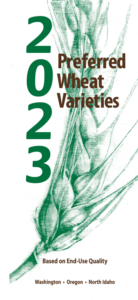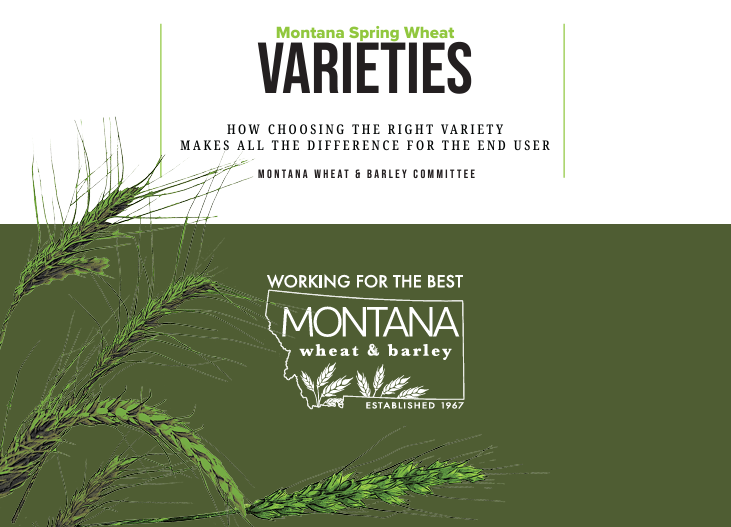U.S. Wheat Industry Focuses on Continuous Wheat Quality Improvement
Wheat quality improvement is at the heart of the U.S. Wheat Associates (USW) mission to enhance the value of U.S. wheat for overseas customers and profitability for U.S. wheat producers. Improved quality makes U.S. wheat more competitive in global markets and, in turn, increased demand benefits producers at home.
USW cooperates with stakeholders across the domestic and international industries to encourage U.S. wheat quality improvement.
Active Participation
Activities include past Wheat Analysis Program and Wheat Quality Improvement Teams (WQIT) designed to help U.S. wheat breeders better understand the most important quality characteristics overseas customers need and encourage them to incorporate them as new varieties are developed.
The Wheat Analysis Program gathers input on wheat quality from key customers and returns that information to U.S. wheat breeding programs, demonstrating the U.S. industry’s willingness to listen and exchange ideas with customers. The teams also determine key messages to bring back to the U.S. industry and incorporate into their respective breeding programs.
To facilitate the program, USW sends export-quality flour samples of U.S. wheat to the UFM Baking School in Bangkok, Thailand, where buyers from the South Asian region evaluate the samples, under the supervision of the USW regional baking consultant. Quality control personnel conduct rheological and end-use quality tests at UFM and complete a standardized questionnaire to provide specific feedback to U.S. breeders on the quality characteristics and varieties preferred by overseas customers.

USW brought a team of U.S. wheat breeders to Latin America in 2018 (here in Mexico) as part of a Wheat Quality Improvement Team (WQIT) activity to exchange quality information with customers in the region.
The WQIT activity directly connects wheat breeders with overseas millers and bakers in their countries. In 2023, USW combined a Wheat Analysis Program event with a WQIT activity in Bangkok, Thailand. Two dozen customer representatives from 13 regional flour mills attended the Wheat Analysis Program to compare the quality of U.S. wheat flour performance in end-products to local standards. Wheat breeders from four public universities and one private company on the WQIT observing the Wheat Analysis Program comparisons heard directly from end-users how the wheat class and varieties performed, and which wheat quality characteristics end-users prefer. The customers also gained an understanding of the U.S. wheat industry’s longer-term commitment to improve quality and consistency of supply.
Promoting Quality at Home
USW and other wheat organizations also promote the importance of wheat quality improvement to farmers. For example, USW also puts wheat quality improvement in the spotlight at producer meetings.
In addition, the National Wheat Foundation conducts the National Wheat Yield Contest every year. USW helps fund milling and baking quality testing on winning entries to ensure they meet specific grade and quality standards.

PNW Preferred Wheat Variety listing for 2023. Read more here.
Other efforts include developing Preferred Variety Lists (PVL), which rank wheat varieties by quality and help wheat producers make informed decisions based on quality outcomes and yield potential.
“Published PVLs from state wheat commissions in Washington, Oregon, and Idaho have helped improve soft white wheat quality for many years,” said Steve Wirsching, USW Vice President and Director, West Coast Office.
The Montana Wheat and Barley Committee (MWBC) recently published a new Spring Wheat Varieties guide that includes a Wheat Quality Index score measuring such quality attributes as flour yield, water absorption, stability time, and loaf volume tested at Montana State University’s Wheat Quality Laboratory.
In its Guide, MWBC recommends farmers choose the variety with a higher score when deciding between two varieties with similar agronomic characteristics and yield potential. MWBC emphasized this “can make a critical difference to buyers who are creating a wide range of wheat-based products.”
“Grain Craft, a private milling company, also publishes a PVL for hard red winter wheat, which is influencing variety selection in the Central Plains states,” Wirsching added.
Read more information from the Wheat Quality Council and from the International Maize and Wheat Improvement Center (CIMMYT).


